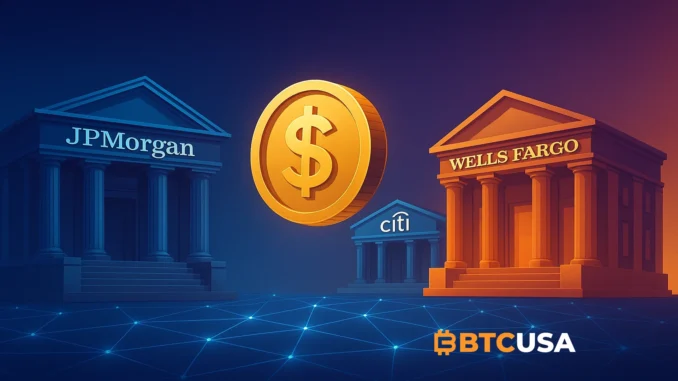
U.S. Banks Move Toward Blockchain-Based Payments
In a landmark development for the financial sector, major U.S. banks — including JPMorgan, Citi, and Wells Fargo — are preparing to introduce international money transfers through stablecoins. The initiative will be implemented via Zelle, the interbank payment network widely used across the United States.
According to early statements, the update will allow Zelle users to send money across borders using blockchain technology, leveraging stablecoins to ensure low fees, speed, and transparency.
Zelle Integrates Stablecoins for Cross-Border Payments
Zelle, which already connects millions of users for domestic payments, is now extending its capabilities to international markets. The integration of stablecoins will make it possible for users to conduct near-instant transactions globally, bypassing traditional intermediaries such as SWIFT and cutting settlement times from days to seconds.
This move highlights how financial giants are beginning to directly utilize blockchain infrastructure, traditionally dominated by crypto-native companies and fintech startups.
Banks Take the Lead in Stablecoin Adoption
While stablecoins were once primarily associated with decentralized finance and crypto exchanges, major financial institutions are now taking the lead in deploying them for mainstream use. By leveraging blockchain, banks aim to enhance efficiency, reduce costs, and expand access to international money movement for retail and business customers alike.
Industry observers see this as a major step toward merging traditional finance and blockchain technology, potentially redefining how global payments operate in the coming years.
A Turning Point for the Global Banking System
This development marks a shift in perception: instead of resisting cryptocurrencies and blockchain innovations, the largest U.S. banks are now embracing them as tools to modernize payment infrastructure. If the pilot proves successful, blockchain-powered cross-border transfers could soon become a standard feature in global banking systems.
By adopting stablecoins, banks signal a new era in digital finance — one where blockchain becomes an integral part of everyday money movement.


